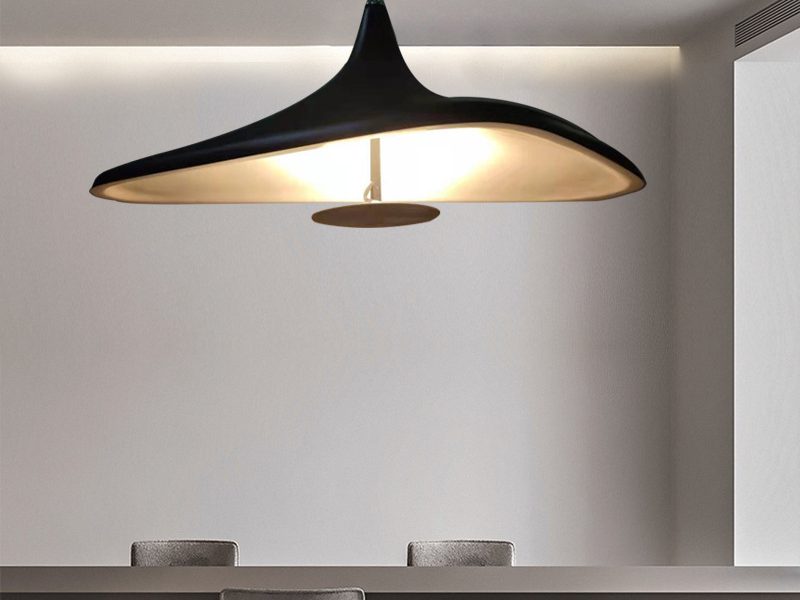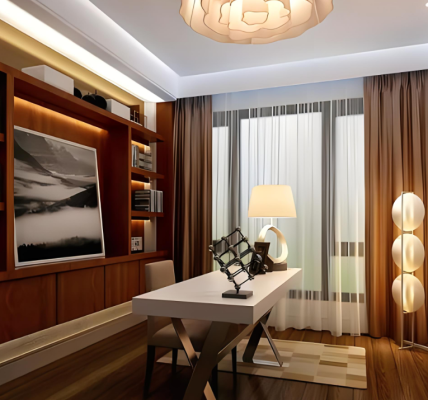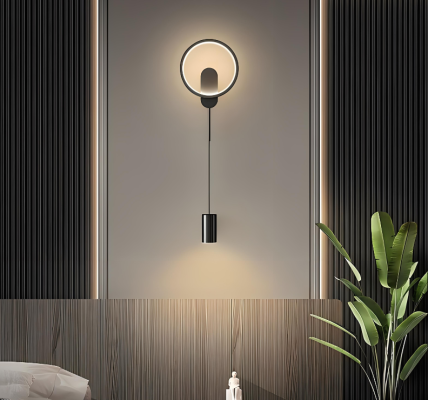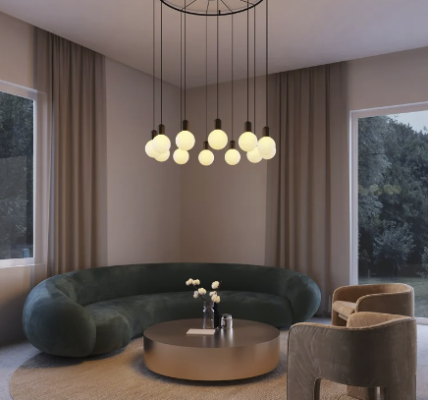Modern lighting refers to the use of contemporary lighting fixtures and techniques to illuminate a space. It goes beyond the traditional concept of lighting and focuses on creating a functional and aesthetically pleasing environment. Lighting plays a crucial role in home design as it can enhance the overall ambiance, highlight architectural features, and create different moods in each room.
There are various types of modern lighting fixtures available in the market. Pendant lights, chandeliers, recessed lights, track lights, and wall sconces are some popular options. Each fixture has its own unique style and purpose. Pendant lights are often used as statement pieces and can be hung over dining tables or kitchen islands. Chandeliers add elegance and grandeur to a space, while recessed lokeliving lights provide a clean and minimalist look. Track lights are versatile and can be adjusted to highlight specific areas, while wall sconces are perfect for adding a warm and cozy glow to a room.
The Latest Trends in Modern Lighting: What’s In and What’s Out
In 2021, there are several lighting trends that have gained popularity. One of the trends is the use of natural materials such as wood and rattan in lighting fixtures. These materials add warmth and texture to a space, creating a cozy and inviting atmosphere. Another trend is the use of statement lighting fixtures as focal points in a room. Oversized pendant lights or chandeliers with unique designs can make a bold statement and become the centerpiece of a space.
On the other hand, there are outdated lighting styles that should be avoided. One such style is the use of fluorescent tube lights, which give off harsh and unflattering light. Another outdated style is the use of mismatched lighting fixtures that do not complement each other or the overall decor of the room.
To incorporate lighting trends into your home decor, start by identifying your personal style and the mood you want to create in each room. Then, choose lighting fixtures that reflect that style and create the desired ambiance. Consider the size and scale of the fixtures in relation to the room and other furniture pieces. Additionally, experiment with different lighting techniques such as layering lights or using dimmers to create different effects.
Choosing the Right Type of Lighting for Your Home: A Guide
When choosing lighting for your home, there are several factors to consider. First, think about the function of each room and how lighting can enhance that function. For example, task lighting is important in areas where you need focused light for activities such as reading or cooking. Ambient lighting provides overall illumination and sets the mood in a room, while accent lighting highlights specific objects or architectural features.
Different types of lighting are suitable for different rooms. In the living room, a combination of ambient, task, and accent lighting is ideal. Pendant lights or chandeliers can provide ambient lighting, while floor lamps or table lamps can be used for task lighting. In the bedroom, soft and warm lighting is preferred to create a relaxing atmosphere. Wall sconces or bedside lamps can provide ambient and task lighting, while a statement pendant light can add a touch of elegance.
Balancing natural and artificial lighting is also important. Natural light should be maximized during the day by using sheer curtains or blinds that allow sunlight to filter through. In the evening, artificial lighting should be used to supplement natural light and create a cozy atmosphere. Consider the direction and intensity of natural light in each room when choosing artificial lighting fixtures.
Creating a Mood with Lighting: Tips and Tricks
Lighting has a significant impact on mood and ambiance in a space. Bright and cool-toned lights can create an energetic and lively atmosphere, while warm and dim lights can evoke a sense of relaxation and intimacy. To create different moods with lighting, consider using dimmers or adjustable lighting fixtures that allow you to control the intensity and color temperature of the light.
Layering lights is another technique that can enhance the mood in a room. By combining different types of lighting, such as ambient, task, and accent lighting, you can create depth and dimension. For example, in the living room, use a combination of overhead pendant lights for ambient lighting, floor lamps for task lighting, and wall sconces or picture lights to highlight artwork or architectural features.
Using lighting to highlight decor and architecture is also an effective way to create a focal point in a room. For example, in the dining room, a chandelier can draw attention to the dining table and create a sense of elegance. In the hallway, wall sconces can highlight artwork or photographs on the walls. Experiment with different lighting techniques to find the best way to showcase your favorite pieces.
Smart Lighting: The Future of Home Illumination
Smart lighting refers to the use of technology to control and automate lighting in a home. It allows homeowners to adjust the brightness, color temperature, and even the color of the light using a smartphone or voice commands. Smart lighting systems can also be programmed to turn on or off at specific times or in response to certain events.
There are several benefits of smart lighting. First, it offers convenience as you can control your lights from anywhere in the house or even when you’re away from home. Second, it allows for energy efficiency as you can easily adjust the brightness and turn off lights when they’re not needed. Third, smart lighting can enhance security by creating the illusion that someone is home even when you’re away.
Examples of smart lighting technology include smart bulbs, which can be controlled using a smartphone app or voice commands; smart switches, which replace traditional light switches and allow for remote control; and smart light strips, which can be used for decorative purposes and provide ambient lighting.
Energy-Efficient Lighting: Saving Money and the Environment

Energy-efficient lighting is becoming increasingly important as people strive to reduce their carbon footprint and save on energy costs. Traditional incandescent bulbs are highly inefficient as they convert only a small percentage of energy into light, while the rest is wasted as heat. Energy-efficient lighting options, such as LED (light-emitting diode) bulbs, are much more efficient and can save up to 80% on energy costs.
LED bulbs are long-lasting and durable, making them a cost-effective choice in the long run. They also come in a variety of color temperatures, allowing you to create different moods and ambiance in each room. Additionally, LED bulbs do not contain harmful substances such as mercury, making them environmentally friendly.
When choosing energy-efficient lighting for your home, look for the ENERGY STAR label, which indicates that the product meets strict energy efficiency guidelines set by the U.S. Environmental Protection Agency. Consider the color temperature and brightness of the bulbs to ensure they meet your needs and preferences.
Lighting for Different Rooms: Living Room, Bedroom, Kitchen, and More
Each room in a home has different lighting needs based on its function and the activities that take place in it. In the living room, a combination of ambient, task, and accent lighting is important. Pendant lights or chandeliers can provide ambient lighting, while floor lamps or table lamps can be used for task lighting. Wall sconces or picture lights can be used to highlight artwork or architectural features.
In the bedroom, soft and warm lighting is preferred to create a relaxing atmosphere. Wall sconces or bedside lamps can provide ambient and task lighting, while a statement pendant light can add a touch of elegance. In the kitchen, bright and focused lighting is essential for tasks such as cooking and food preparation. Under-cabinet lights or recessed lights can provide task lighting, while pendant lights or track lights can provide ambient lighting.
In the bathroom, a combination of bright and soft lighting is important. Vanity lights or wall sconces can provide task lighting for grooming activities, while recessed lights or a flush mount ceiling light can provide ambient lighting. In the dining room, a chandelier or pendant light can create a focal point and provide ambient lighting, while wall sconces or buffet lamps can be used for accent lighting.
Lighting Fixtures and Styles: From Chandeliers to Floor Lamps
There are various types of lighting fixtures available, each with its own unique style and purpose. Chandeliers are often used as statement pieces and can add elegance and grandeur to a space. They come in a variety of styles, from traditional crystal chandeliers to modern and minimalist designs. Pendant lights are another popular option and can be hung over dining tables or kitchen islands to provide focused lighting.
Floor lamps are versatile and can be used to provide both ambient and task lighting. They come in various styles, such as arc floor lamps, tripod floor lamps, and torchiere floor lamps. Table lamps are another option for task lighting and can be placed on bedside tables, desks, or side tables.
Wall sconces are perfect for adding a warm and cozy glow to a room. They can be used as accent lighting to highlight artwork or architectural features. Recessed lights are a popular choice for providing general illumination in a space. They are installed into the ceiling and provide a clean and minimalist look.
Lighting Accessories: Adding Personality to Your Home
Lighting accessories are an important part of home decor as they add personality and style to a space. They can also enhance the functionality of lighting fixtures. Examples of lighting accessories include lampshades, which come in various colors, patterns, and textures; light bulbs with decorative filaments that create a vintage look; and dimmer switches that allow you to adjust the brightness of the lights.
To incorporate lighting accessories into your decor, consider the overall style and color scheme of the room. Choose lampshades that complement the furniture and other accessories in the space. Experiment with different types of light bulbs to create different effects. For example, Edison bulbs with exposed filaments can add a vintage and industrial touch to a room.
DIY Lighting Projects: Making Your Own Unique Pieces
DIY lighting projects offer a great opportunity to create unique and personalized lighting fixtures for your home. They also allow you to save money and unleash your creativity. There are various DIY lighting projects that you can try, depending on your skill level and the materials you have available.
One example of a DIY lighting project is creating a pendant light using a mason jar or a wire basket. Simply attach a light socket and cord to the jar or basket, and hang it from the ceiling using a chain or rope. Another idea is to repurpose old wine bottles or glass jars into table lamps by adding a lamp kit and shade.
If you’re feeling more adventurous, you can try making your own chandelier using materials such as driftwood, branches, or even old bicycle wheels. The possibilities are endless when it comes to DIY lighting projects, so let your imagination run wild.
In conclusion, modern lighting plays a crucial role in home design as it enhances the overall ambiance, highlights architectural features, and creates different moods in each room. It is important to stay updated with the latest trends in modern lighting while avoiding outdated styles. When choosing lighting for your home, consider factors such as function, room type, and natural light sources. Experiment with different lighting techniques to create different moods and highlight decor and architecture.
Smart lighting is the future of home illumination, offering convenience, energy efficiency, and enhanced security. Energy-efficient lighting is also important for saving money and reducing environmental impact. Each room in a home has different lighting needs, and it is important to choose fixtures and styles that match the overall decor. Lighting accessories add personality and style to a space, while DIY lighting projects offer a unique and personalized touch. Overall, lighting is a powerful tool in home design and should be used creatively to create a functional and aesthetically pleasing environment.




